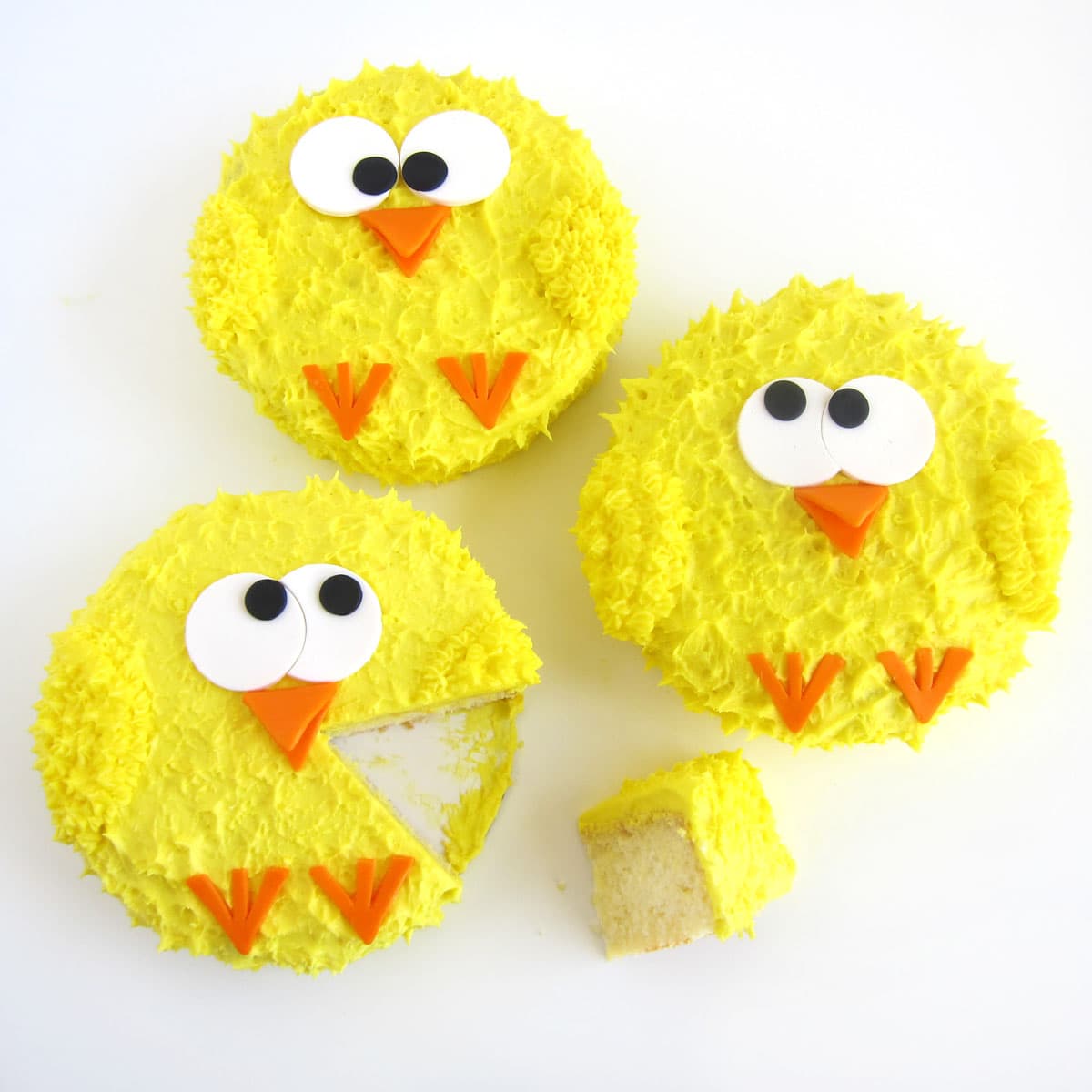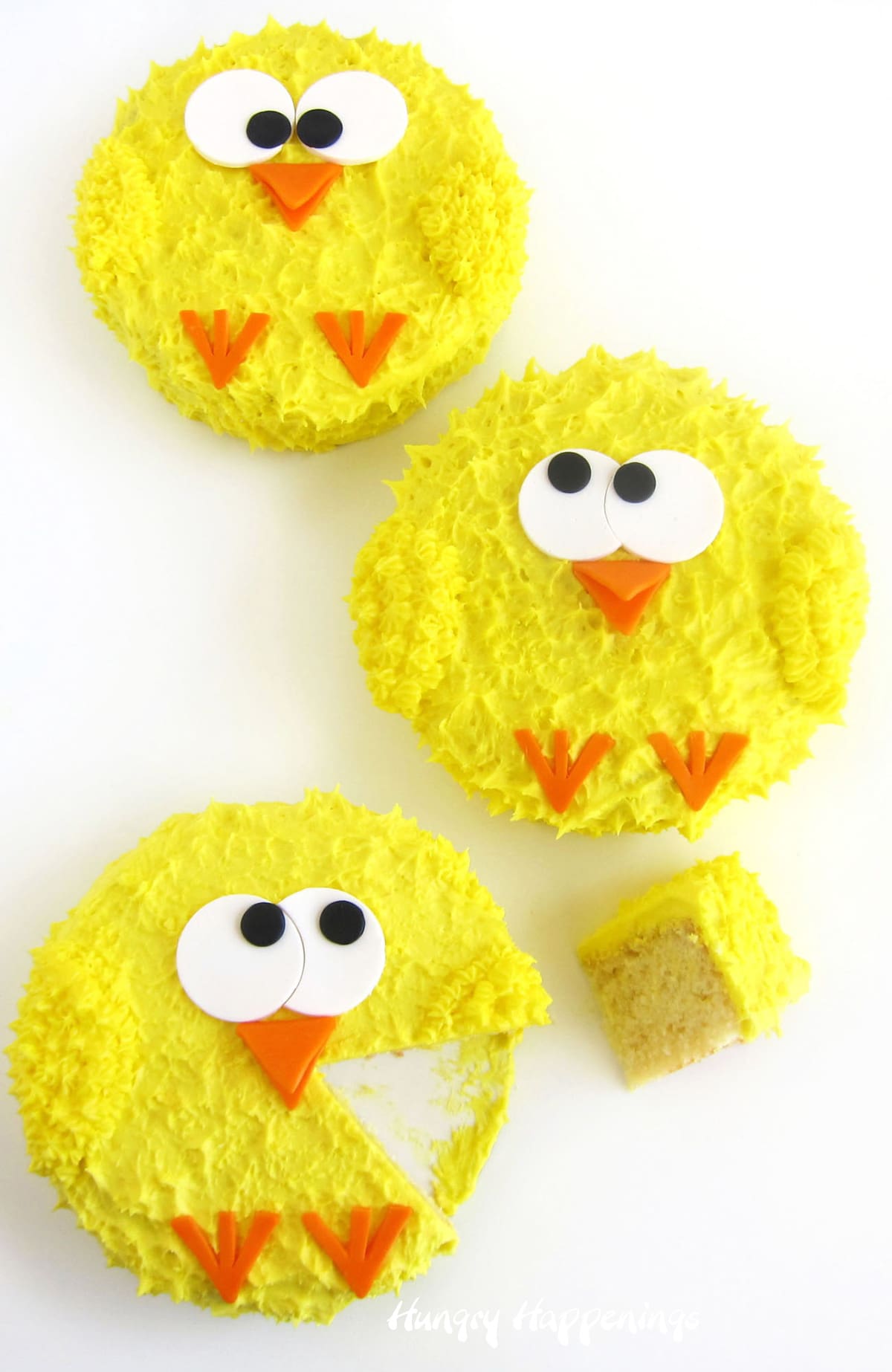Serve these adorable little Lemon Cake Chicks for Easter. Each lemon-flavored Easter cake is topped with tart lemon frosting and is decorated using modeling chocolate or frosting. They taste as good as they look.

How cute will these baby chick cakes look on your Easter dessert table? They are sure to make your family smile.
I have to admit, sometimes it's hard to cut into a cake that looks this cute but my lemon-loving husband could not wait for me to share a slice with him. He was happy to see that first cut but he then had to wait until I snapped all of my pictures.
He'll tell you that it was worth the wait!
The lemon cake is moist and tender and the frosting is sweet and tart and bursting with lemon flavor.

I had fun adding a unique look to each of my cakes using homemade modeling chocolate. Just changing the eyes, makes each baby chick look different.
The modeling chocolate decorations are easy to make using cookie cutters.
I used a 1 ½-inch round cutter and a medium round plunger cutter to make the eyes. Then, I used a 1-inch triangle cutter to make the beak and feet.

If you prefer to use just frosting, you can decorate the cake using a pastry bag.
These baby chick cakes were decorated by piping stars of frosting over the cake. The eyes can be piped on but I simply added two small black candy melts to each cake.
I think the cakes decorated with modeling chocolate are cuter but these frosted cakes are pretty darn cute too. So, no matter how you decide to decorate your baby chick cakes for Easter, you'll need to use a good lemon cake and lemon frosting recipe.
Head over to Dixie Crystals to check out my delicious recipe.
Recipe
Grab the Lemon Cake Chicks recipe over on the Dixie Crystals website.
- How to make peanut butter? - February 15, 2024
- OREO Penguins - December 20, 2023
- OREO Snowmen - December 20, 2023





Please leave a comment.